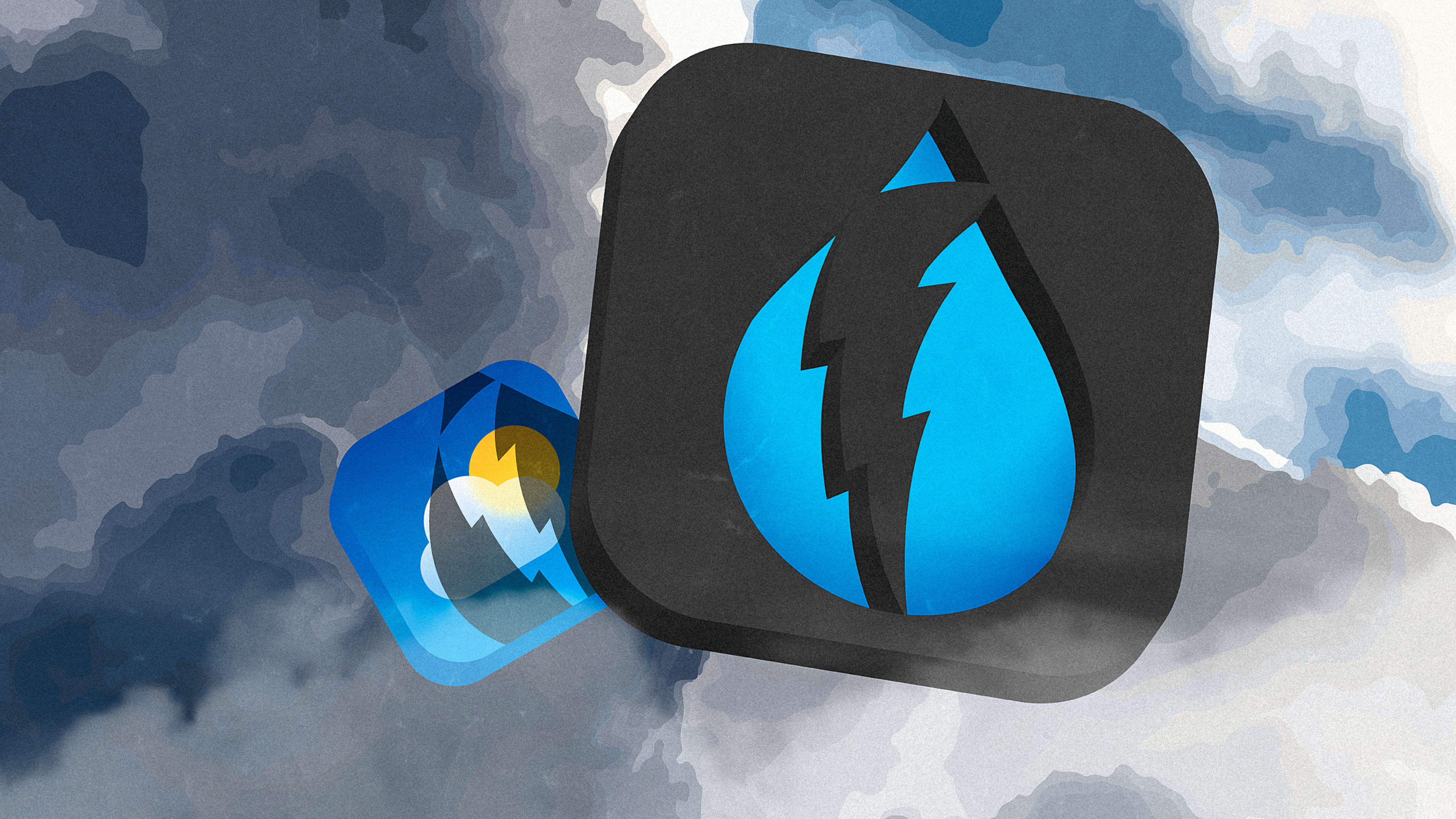Last summer, Apple announced it was discontinuing Dark Sky to the collective groan of the internet. The Cupertino tech giant bought Dark Sky in 2020 and had been slowly absorbing its features into its own default Apple Weather app until it killed Dark Sky for good on January 1 of this year.
In the months between the announcement and Dark Sky’s inevitable death, Apple has been on a campaign to convince everyone that its updated weather app is just as good as the app it bought and dismantled.
The issue, though? Apple’s app just isn’t as good. Apple Weather might have glossier graphics and more data, but the reason Dark Sky was so great is exactly why Apple’s app is so disappointing. Dark Sky’s best feature was its perfectly simple functionality. Apple Weather, on the other hand, makes you feel like a Roman augur trying to read the entrails of a dove.

Yes, it’s true that Apple Weather uses much of the same data as Dark Sky. It’s also true that it can tell you if it’s going to rain or shine in the next 60 minutes within a block-sized radius (if you live in the U.S., U.K., and Ireland).
But its UI makes all of that pointless. It’s simply bad. It ignores data design basics like Edward Tufte’s data-ink ratio, a concept that describes the number of pixels (or amount of ink) dedicated to the essential data in an infographic versus the extraneous “chart junk” that can obscure the message.
And its UX seems to purposefully hide information behind user interface layers that require more clicks than needed. Where Dark Sky used design to simplify the weather (to an arguably detrimental degree), Apple is now using design to obfuscate the weather.
Let’s start with the obvious: Apple’s full-screen animations showing the current weather would probably make Tufte scream in terror at night. The animations feel like leftovers from Scott Forstall’s UX reign at Apple—the guy who turned iOS into a skeuomorphic user interface mess (at Steve Jobs’s behest).
Early on in Forstall’s era, Apple’s weather app featured static, overly detailed illustrations of the weather. With iOS 15—which also incorporated some of Dark Sky’s functionality—those pictures became animations. The animations still exist today in the iOS 16 version of the app, and eat up processor and battery time while hindering the readability of the information displayed on top.
By contrast, Dark Sky represented the current weather clearly at the top of the screen. It took a minimal fraction of screen space and was layered over a flat background to optimize readability, which should be the cornerstone of any UX—especially one that is designed to communicate precise data points.
A shining example of this was Dark Sky’s one-hour precipitation chart, which showed you the level of rain over the next 60 minutes and the certainty of that prediction. It did it by animating the area chart: The wobblier it was, the less accurate the prediction. The more stable, the more accurate. Pretty simple. On top of that, Dark Sky clearly labeled three simple levels of precipitation (light, medium, and heavy).
But the epitome of Dark Sky’s information clarity, one that Apple Weather sorely lacks, is the way it presented the next 24 hours of weather. In a single chart aligned on a vertical time axis, Dark Sky showed the projected sky, precipitation, and temperature. It required only a quick scroll to comprehend everything you need to know about the weather for the hours ahead.

The column on the left of the hour axis showed flat colors to display the clouds in the sky with different shades of gray and the rain prediction, using different shades of blue going from light to dark. It’s obvious, intuitive, and so easy to understand. On the right side, a simple horizontal histogram showed the hourly temperature, not only telling you how it was going to feel outside at a particular time but also how the weather was going to evolve.
At a glance, you could see if you should expect a stable weather day ahead or if you were going to face sharp turns. You could also easily switch from temperature to other data—like precipitation probability percentage or “feels like” temperature—with the click of a button.
Dark Sky wasn’t perfect, but it was exceptionally usable. And that’s where Apple Weather gets it all wrong. The new app doesn’t even have custom alerts, which were one of Dark Sky’s most useful features. With the defunct weather app you could get a notification about anything. As our very own art director, Daniel Salo, told me earlier today, lamenting Dark Sky’s demise: “As one of the bereaved it also bears mentioning that the ability to customize alerts will be deeply missed. . . . Being able to set an alert for when local conditions are frost-prone is huge for knowing if you need to cover your veggie beds.”
After all, the purpose of any weather prediction system is to make your life easier. Apple Weather’s convoluted UX just makes life harder. It has become everything that Dark Sky founders Adam Grossman and Jack Turner set out to eliminate when they launched a Kickstarter campaign for Dark Sky more than a decade ago: “Some apps try to give you everything—current conditions, 10-day forecasts, and radar—all wrapped up in one. These are universally clunky, slow, and a pain in the ass to use.”
Indeed. The Cupertino company should have never killed Dark Sky. It should have killed Apple Weather instead.
Recognize your brand’s excellence by applying to this year’s Brands That Matter Awards before the final deadline, June 7.
Sign up for Brands That Matter notifications here.
